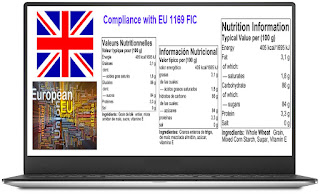A Guide On EU Food Labeling
To avoid the deception of customers and to standardize the display of food nutrition information, the origin of primary components must be mentioned if different from the origin of the product under the new Food Information to Consumers (FIC) rule. Several significant modifications to food labeling rules have been implemented in the European Union, and food manufacturers must adhere to them whether they are situated in Europe or exporting to one.
Three components of a food item have been highlighted in the new EU food law: quality, safety, and security of food goods. The food manufacturers, restaurant owners must follow the EU food labeling guide.
Take a look at the requirements of EU food labeling:
All food products delivered to end-users are subject to the new food labeling laws (covering all companies dealing in the production and catering of food products and marketing of them online and offline). Non-prepacked items must have an allergen statement on the label, according to the new food rule. The nutrition statement, font size for printing information on labels, an indication of vegetable origin for vegetable oils, an extension of country of origin labeling to fresh meat, and highlighting allergens in the list of ingredients are all significant requirements under the new EU food labeling standards. It is also required that unprocessed frozen meat and fisheries items have a date of freezing indication. Instead of “directive,” it is now “regulation.”
Nutritionist Pro is a powerful nutrition food label maker that allows customers to follow the EU food labeling guide and easily generate European Union nutrition labels at a cheap cost. Users may build an endless number of food label styles and labels in English, French, and Spanish. It also allows users to create an unlimited number of recipes/formulas using a big European food database.


Comments
Post a Comment